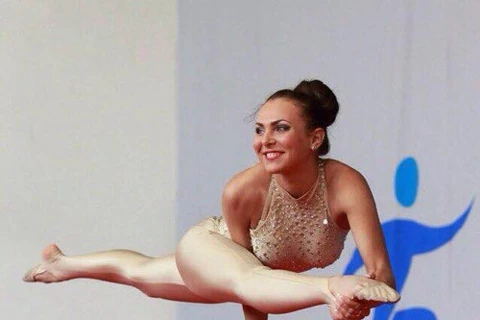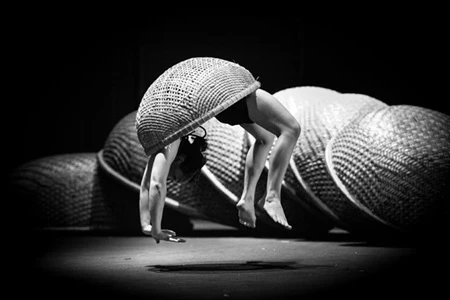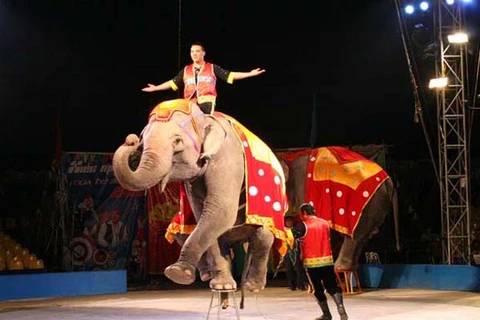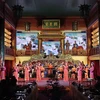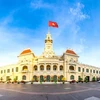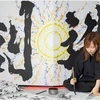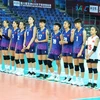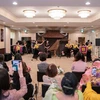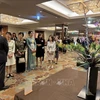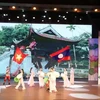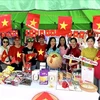Hanoi (VNA) – As Vietnam's economy shifts further toward a market economy, art and entertainment establishments, which used to be under the sponsorship of the state now have to sink or swim on their own merits.
Vietnam National Music Song and Dance Theatre, Tuoi Tre (Youth) Theatre and Vietnam Circus Federation (VCF) are among the art units which have cut spending by 30 percent in 2015 according to the state budget for art establishments from 2015 to 2017 from the Ministry of Culture, Sport and Tourism.
Vietnam National Music Song and Dance Theatre has adapted well by making use of its good infrastructure with a spacious campus, cafe's, restaurants, large parking as well as a beautiful location.
Thank to the active operation and the financial support from foreign culture organisations and funds from Sweden, Denmark, Norway, the Youth Theatre is also confident about the future.
In contrast, Vietnam Circus Federation (VCF) seems to be facing many difficulties. In the past, the state covered VCF's spending. The performers did not need to worry about their salary and spending for shows as well as the federation's operation. However, VCF leaders now have to balance the account books in the market economy.
"Circus is a career which has its specific characteristics," said Ta Duy Anh, director of Vietnam Circus Federation.
"There are the gaps between artists' age and seniority. Some are not old enough to retire, but they are not young enough to continue performing."
Anh said some actors or actresses at the age of 40 or 50 could not perform, but the federation still had to pay their salary. These artists contributed to the federation's success, so it was difficult to take them off the payroll. Meanwhile, some young artists who were performing on the stage are not official employees. Therefore, the federation needed to balance its spending to ensure equality between artists.
Attracting good artists to work is difficult because to do that, the federation needs to give incentives such as high salary and good equipment. However, with VCF's conditions at present, it is not easy to do so.
"Creating art programmes that attract audiences takes a long time, at least two or three years," Anh added. "This time is for training new artists, writing scripts, training and practising new actions and dance movements. Therefore, the VCF's progammes may be interrupted in two or three years."
Facing these difficulties, the VCF has entertained many ideas.
"The federation always makes long-term plans for its development, at least in five years. In each year, the leaders prepare detailed plans for that year", said Anh.
Additionally, as the leader of the federation, Anh always studies circus trends across the world.
"We need to know where we are in the world, what our strengths are, what the audiences need from our performances and what we can apply to our circus," Anh added.
Beside that, the VCF also receives orders from the Ministry of Culture on special occasions such as Independence Day and International Children's Day.
"These are big programmes with a big turnover that can partly compensate for the State budget cuts," Anh said.
The VCF often has shows for organisations, schools, companies. These shows also contribute to increasing artists' income and partly help the VCF overcome its difficulties.
Asked to comment about the Ministry of Culture's policy, Anh said this was the right policy.
"I think this is a reasonable policy", he said. "It is reasonable because it is time for artists who are performing to receive compensation equal to their efforts. They should not have to work to provide income for other artists. And those who do not work will certainly not receive payment."
Although the staff of the VCF face with difficulties, accidents when they practise, rehearse, prepare for their performances, they still have love for their career.
"My grandfather, Ta Duy Hien, known as the founder of the Vietnamese circus, inspired me. I was trained to be a circus artist since I was young, so my love for it has gradually grown," Anh said. "It is 40 years since I started the work of a clown. I do it with all my enthusiasm."
Many of his friends quit to do other jobs. They might earn much more money than him, but for him it is not important because "I feel very happy to follow my career, and this job brings me many things that my friends do not have. I am loved by the audiences, make them smile with funny performances and help them learn something after those laughs. I am also given artist titles by the State," he added.
Being a leader of the federation and an artist, Anh confided that he had many concerns about how to ensure his colleagues' income, how to maintain and develop the federation, how to train young artists, etc.
Like Anh, Nguyen Ngoc Anh, 34, an artist with nearly 20 years at the federation has devoted her life to her career.
"The circus career is hard and dangerous. Accidents happen often. No one does this job without injuries," she said. "However, with my love to this career, I will try my best to contribute to the development of the federation and give interesting performances to the audiences."
Not only do artists with long seniority love the work but young ones who have just started performing on the stage also have deep love for circus.
Do Tung Duong, 20, who has worked at the federation for several months, is very enthusiastic about his job.
"I want to have a strong attachment to this job despite difficulties in the future," he said.
But it's easier said than done. To keep the federation's turnover stable as well as ensure regular circus shows in this market economy requires the activeness, clear-headednesss and enthusiasm from both the VCF's leaders and artists.-VNA

